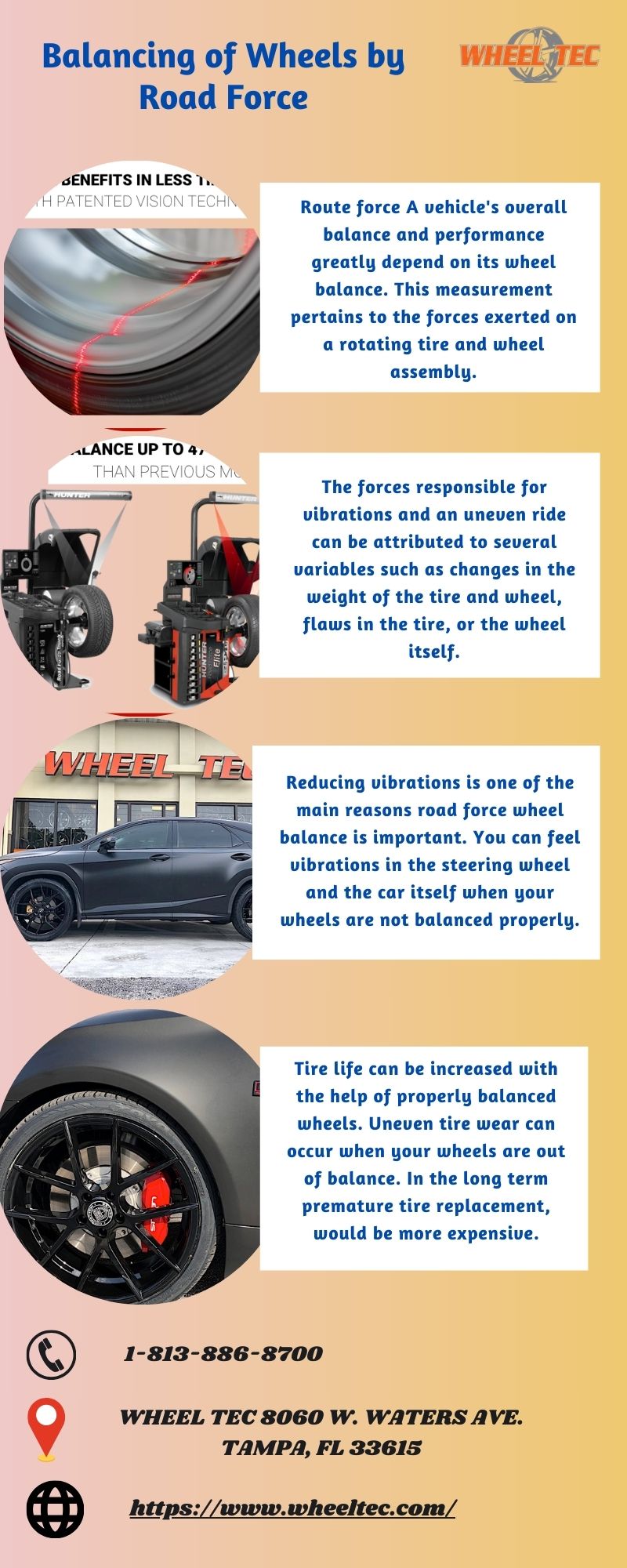Why Is Wheel Balancing Important for Reducing Vibrations?
Wheel balancing is important for reducing vibrations as it ensures that the weight is evenly distributed on the tires, reducing imbalances that can cause vibrations. Properly balanced wheels result in smoother and safer driving experiences.
Vibrations in a vehicle can be caused by imbalances in the tires, which can occur when the weight is not evenly distributed. These imbalances can be caused by factors such as uneven tire wear or minor damage to the tire or rim.
When the wheels are unbalanced, they can cause vibrations that can be felt by the driver and passengers, leading to discomfort and potentially affecting the overall performance and handling of the vehicle. By ensuring that the weight is evenly distributed on the tires through wheel balancing, vibrations can be minimized, resulting in a smoother and safer driving experience.

Credit: imgpile.com
Understanding Wheel Balancing
Importance Of Wheel Balancing
Wheel balancing is crucial for reducing vibrations and ensuring a smooth driving experience.
Effects Of Unbalanced Wheels
Unbalanced wheels lead to uneven tire wear which can affect vehicle safety and performance.

Credit: www.amazon.com
Causes Of Wheel Imbalance
Wheel imbalance can occur due to factors such as uneven tire wear, damaged rims, or improper tire mounting. Correct wheel balancing is crucial for reducing vibrations, which can improve driving comfort and minimize wear and tear on the vehicle components.
Properly balanced wheels also enhance safety by ensuring optimal traction and stability on the road.
Tire Wear And Tear
Tire wear and tear has a significant impact on wheel imbalance. Over time, tires naturally wear down due to constant contact with the road surface. As the tread on a tire wears down, it becomes uneven, resulting in an imbalanced wheel. Uneven tread wear can occur for various reasons, including improper alignment, underinflation, overinflation, and lack of regular tire rotation. When the weight distribution on a tire becomes uneven, it creates an imbalance that leads to vibrations while driving.
Improper Installation
Improper installation of tires, rims, and wheel weights can also cause wheel imbalance. During the installation process, it is crucial to ensure that the tires are mounted correctly on the rims and that the rims are securely fastened to the vehicle’s hub. If the tires are not properly aligned with the rims, it can result in an imbalance that leads to vibrations. Similarly, if the wheel weights, which are used to counterbalance any irregularities in the tire and rim assembly, are not correctly positioned, it can cause imbalance and vibrations.
Signs Of Unbalanced Wheels
Balanced wheels are crucial for reducing vibrations in a vehicle. Signs of unbalance can lead to uneven tire wear and a shaky ride, highlighting the importance of regular wheel balancing for a smoother driving experience.
Vibrations At High Speeds
Unbalanced wheels can cause noticeable vibrations, especially when driving at high speeds. These vibrations can be felt through the steering wheel or even the entire vehicle itself. Vibrations at high speeds are not only uncomfortable but also pose a safety risk, as they can affect your control over the vehicle. If you experience excessive shaking or vibrating when driving on the highway or at high speeds, it is a clear indication that your wheels are not properly balanced.Uneven Tire Wear
Another sign of unbalanced wheels is uneven tire wear. When the wheels are out of balance, certain parts of the tire experience more pressure and friction than others. This uneven distribution of weight causes the tire to wear unevenly. You may notice that the tread on one side of the tire wears out faster than the other side, or that specific areas of the tire are more worn down. Uneven tire wear not only reduces the lifespan of your tires but also compromises their performance and safety. To identify uneven tire wear, you can visually inspect your tires. Look for signs of uneven tread wear, such as bald spots, cupping, or feathering. If you notice any of these irregularities, it is essential to have your wheels balanced to prevent further damage and ensure optimal tire performance. In summary, unbalanced wheels can lead to vibrations at high speeds and uneven tire wear. These signs serve as crucial indicators that your wheels require balancing. Taking proactive measures to address wheel balancing issues will not only improve your driving experience but also enhance safety and prolong the lifespan of your tires.Benefits Of Proper Wheel Balancing
Proper wheel balancing is essential for reducing vibrations and ensuring a smooth ride. By evenly distributing the weight around the tire and wheel assembly, it prevents uneven wear, extends tire lifespan, and improves fuel efficiency. Say goodbye to uncomfortable vibrations and enjoy a safer, more comfortable drive.
Improved Safety
Proper wheel balancing enhances vehicle stability during driving, reducing risk of accidents.
Extended Tire Life
Balanced wheels prevent uneven wear, increasing tire lifespan and saving money in the long run.
Correct wheel balancing is essential to ensure smooth driving experience and safety. When wheels are not properly balanced, it can lead to vibrations that affect vehicle performance. Let’s delve into the benefits of proper wheel balancing.
Wheel Balancing Methods
When it comes to ensuring a smooth and comfortable ride, proper wheel balancing is essential. Wheel balancing methods play a crucial role in reducing vibrations and ensuring a safe driving experience. Let’s explore the different methods of wheel balancing and understand their significance in maintaining optimal vehicle performance.
Static Balancing
Static balancing is a basic method used to evenly distribute the weight of a tire and wheel assembly. It involves placing the wheel on a balancer that measures the up and down movement of the assembly. Small weights are then added to the opposite side of the heavy spots to achieve balance.
Dynamic Balancing
Dynamic balancing, also known as spin balancing, takes static balancing a step further. It involves spinning the tire and wheel assembly at high speeds to identify imbalances causing vibrations. This method helps to pinpoint weight discrepancies on both the vertical and horizontal planes, leading to more precise adjustments.

Credit: www.amazon.com
Frequently Asked Questions For Why Is Wheel Balancing Important For Reducing Vibrations?
Does Balancing Tires Help With Vibration?
Balancing tires can help eliminate vibration. It ensures equal weight distribution, preventing uneven spinning and reducing vibration that can cause discomfort while driving.
Why Is Wheel Balancing Important?
Wheel balancing is important to prevent uneven tire wear, vibrations, and ensure smooth driving experience. It helps extend tire lifespan and improve overall vehicle performance.
What Does Wheel Balancing Help In Minimizing?
Wheel balancing helps in minimizing vibrations and uneven tire wear, leading to a smoother and safer ride. It also reduces strain on suspension components and improves fuel efficiency.
Why Is My Car Still Vibrating After Wheel Balance?
The car may still vibrate after wheel balance due to issues with the tires, suspension, or alignment. Ensure proper tire pressure and inspect for any physical damage. Also, have the suspension and alignment checked by a professional to address any underlying issues.
Conclusion
Ensuring proper wheel balancing is crucial for a smooth and vibration-free driving experience. Neglecting this maintenance can lead to discomfort and even safety hazards on the road. By prioritizing wheel balancing, you enhance vehicle performance and prolong the lifespan of your tires.
Stay safe, stay balanced.

